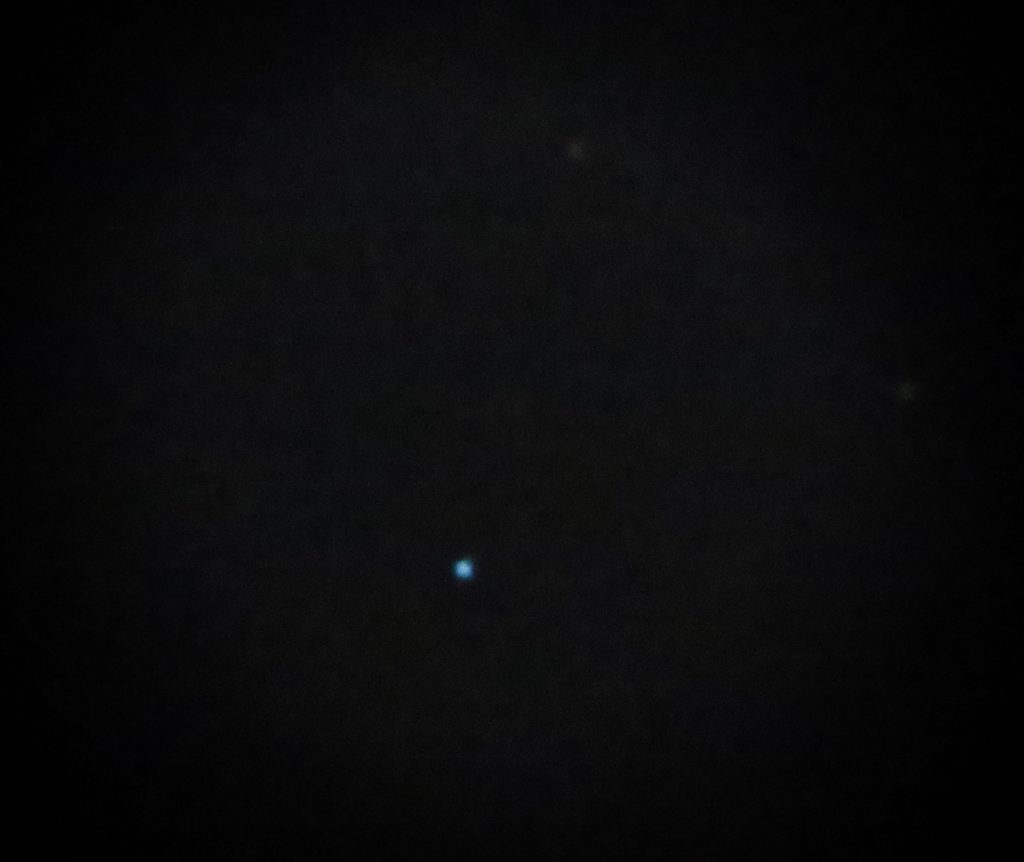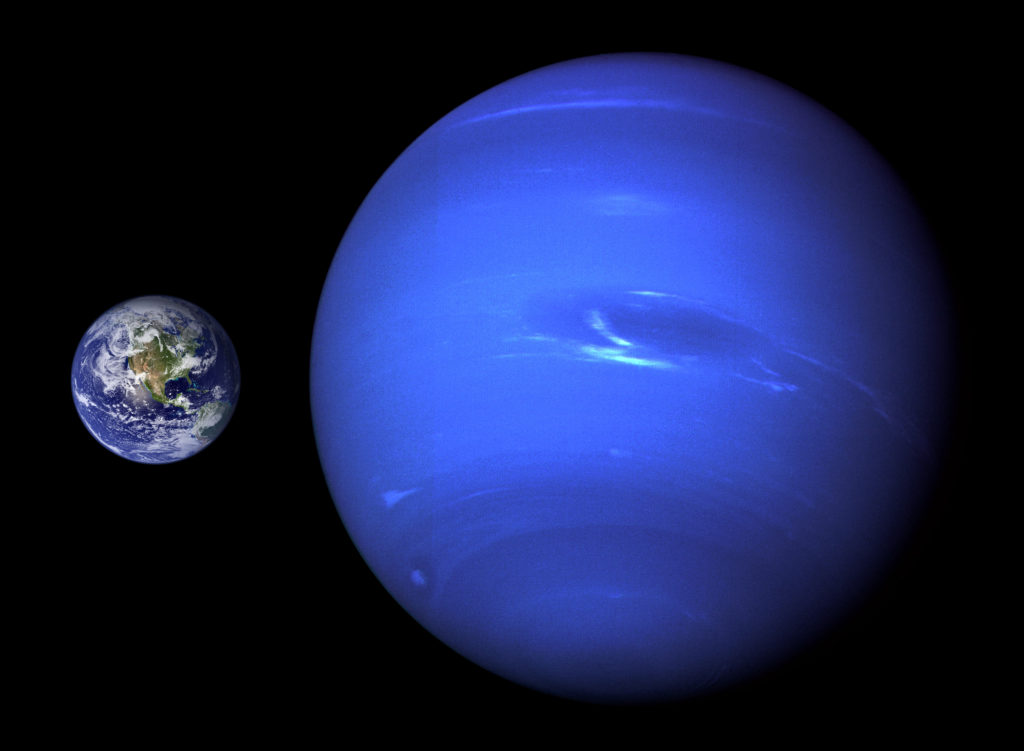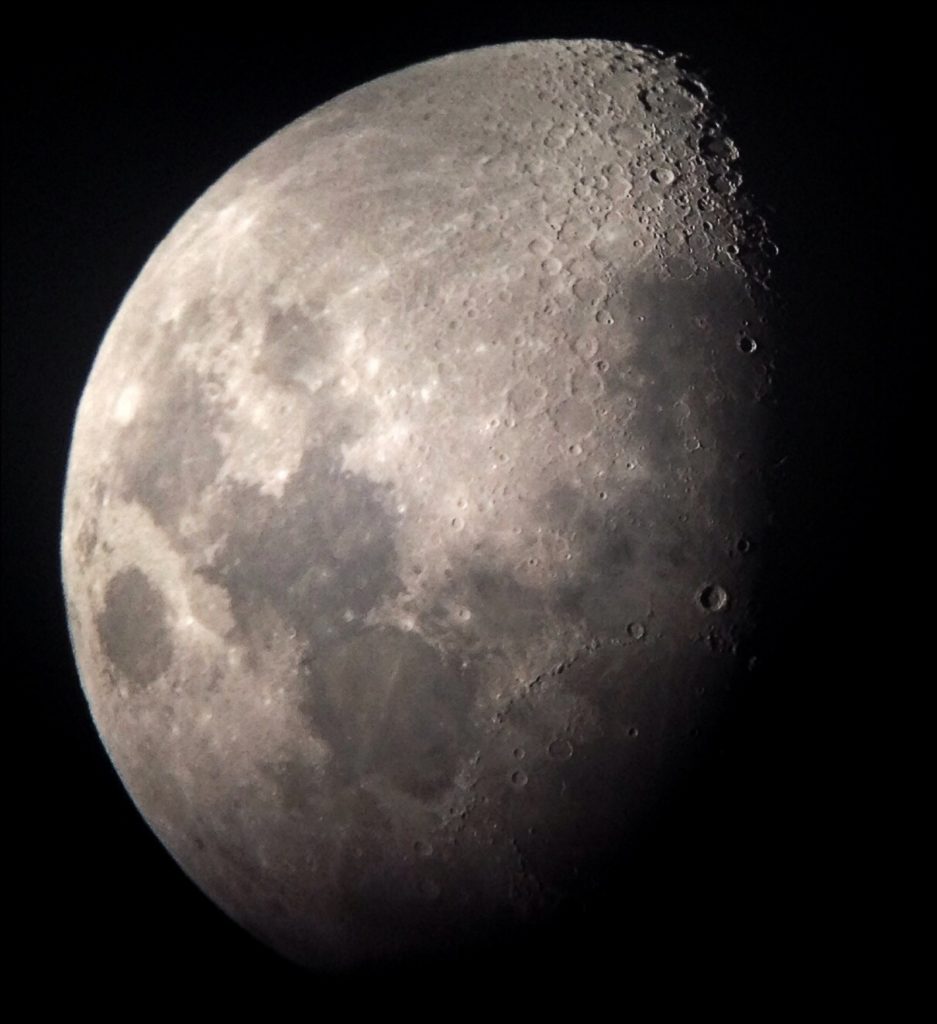I’ve searched for Neptune many times and thought I’ve seen it a few of those times, but I was never sure I had the right target. In late October, it was just within a Telrad target of he Moon, and I had my chance! I was able to confirm the position by stars near it […]
I’ve searched for Neptune many times and thought I’ve seen it a few of those times, but I was never sure I had the right target. In late October, it was just within a Telrad target of he Moon, and I had my chance! I was able to confirm the position by stars near it and see, what I knew to be Neptune! (Do I sound a little excited?) Not only was I able to see it, but I even had a happy accident and was able to image it.

This image was taken on my handheld point and shoot Canon G16 camera at the eyepiece. I love how you can see the spherical shape and the brilliant blue color.
If you don’t know anything about Neptune, then you probably aren’t impressed. So, let me tell you a little about Neptune. This little guy is actually a very big guy. He is about 17 times the mass of the earth, and the 4th largest planet in our solar system. Neptune is the furthest planet from the sun and it orbits the sun every 164.8 years. That means that since it’s discovery in 1846, it’s JUST completed a cycle around the sun. Neptune is about 2.8 billion miles away from the sun.

Neptune’s atmosphere is made up of hydrogen, helium with traces of hydrocarbons and possibly nitrogen, but it contains a higher proportion of “ices” such as water, ammonia, and methane. He gets his beautiful blue color from the methane in the upper atmosphere absorbing the red light from the sun and reflecting the blue light back into space, making it appear blue.
Neptune is a really cool planet. I encourage you to read up on him soon, or better yet, go find him in the sky.

